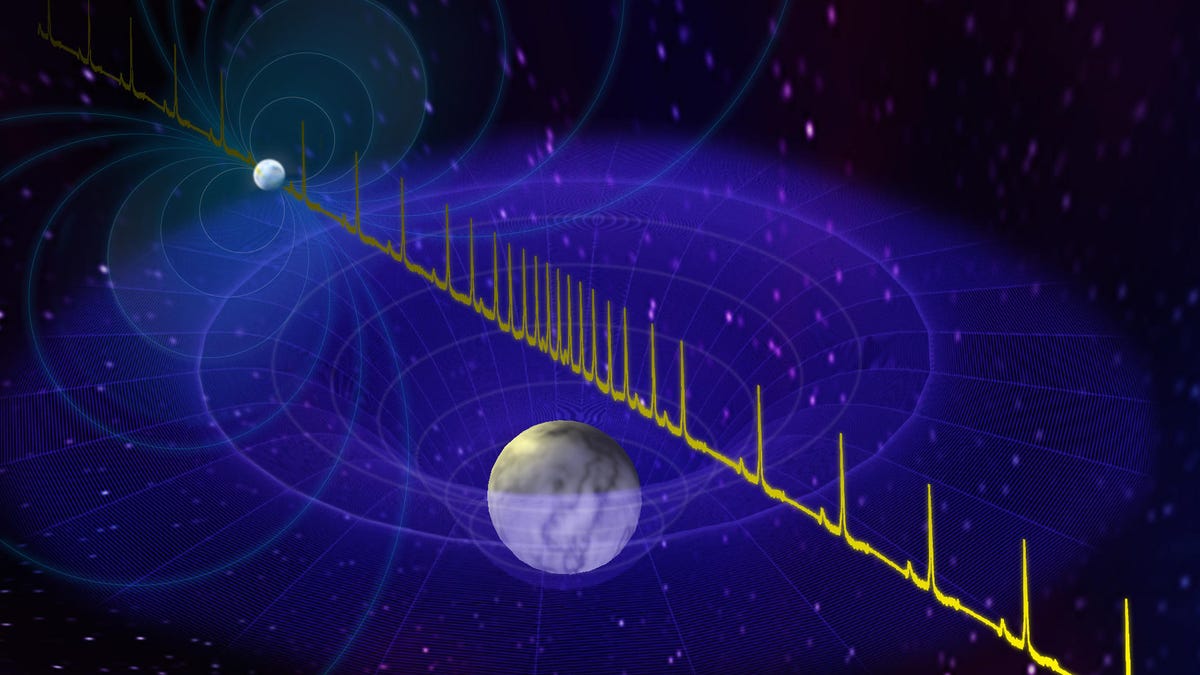Astronomers discover a massive neutron star that almost shouldn't exist
A superdense pulsar sits right on the line between normal and the weirdest objects in the universe.

An illustration of the pulsar and a nearby white dwarf star, which scientists used to help measure the pulsar's mass.
Scientists say they've found a spinning neutron star, or pulsar, that is so densely compacted it might be right on the limit of what's possible. It could exist precariously at the tipping point where any more pressure would cause it to collapse completely and form a new black hole.
A team of astronomers using the Green Bank Telescope in West Virginia found that the rapidly rotating pulsar, called J0740+6620, is the most massive neutron star ever measured.
A neutron star is a very weird cosmic object that's basically the highly compressed remnant of a massive star after it has gone through a supernova explosion.
"Neutron stars have this tipping point where their interior densities get so extreme that the force of gravity overwhelms even the ability of neutrons to resist further collapse," said Scott Ransom, an astronomer at the National Radio Astronomy Observatory (NRAO) and co-author of a paper publishing Monday in Nature Astronomy. "Each 'most massive' neutron star we find brings us closer to identifying that tipping point and helping us to understand the physics of matter at these mind-boggling densities."
To begin to imagine the density, picture our sun, which has 333,000 times as much mass as the Earth. Got it? OK, now imagine the sun has a twin and this pair of twins has a little sister named Proxima Centauri, which is the nearest star beyond the sun; she's a red dwarf star with a mass that's roughly one-sixth that of the sun.
Now imagine you could take all three of these stars and run them through the biggest compactor in the universe, smashing them down to create an exotic object -- a sphere only 19 miles (30 km) across.
Put even more simply, it's like taking those three massive stars and compressing them down to be roughly the size of the city of Denver.
"Neutron stars are as mysterious as they are fascinating," said Thankful Cromartie, a graduate student at the University of Virginia and a fellow at NRAO. "These city-sized objects are essentially ginormous atomic nuclei. They are so massive that their interiors take on weird properties. Finding the maximum mass that physics and nature will allow can teach us a great deal about this otherwise inaccessible realm in astrophysics."
The measurement of this neutron star actually came as part of NRAO's search for gravitational waves.
"At Green Bank, we're trying to detect gravitational waves from pulsars," said West Virginia University professor Maura McLaughlin. "In order to do that, we need to observe lots of millisecond pulsars, which are rapidly rotating neutron stars. This [discovery] is not a gravitational wave detection paper but one of many important results which have arisen from our observations."
Neutron stars and pulsars are the densest "normal" objects that we know of. The only thing more dense is a black hole, which is certainly not normal. As such, this specific pulsar discovery is as close as we've ever come to defining the line between the normal and the most puzzling, mysterious and exotic objects in existence.
Originally published 10:38 a.m. PT.

